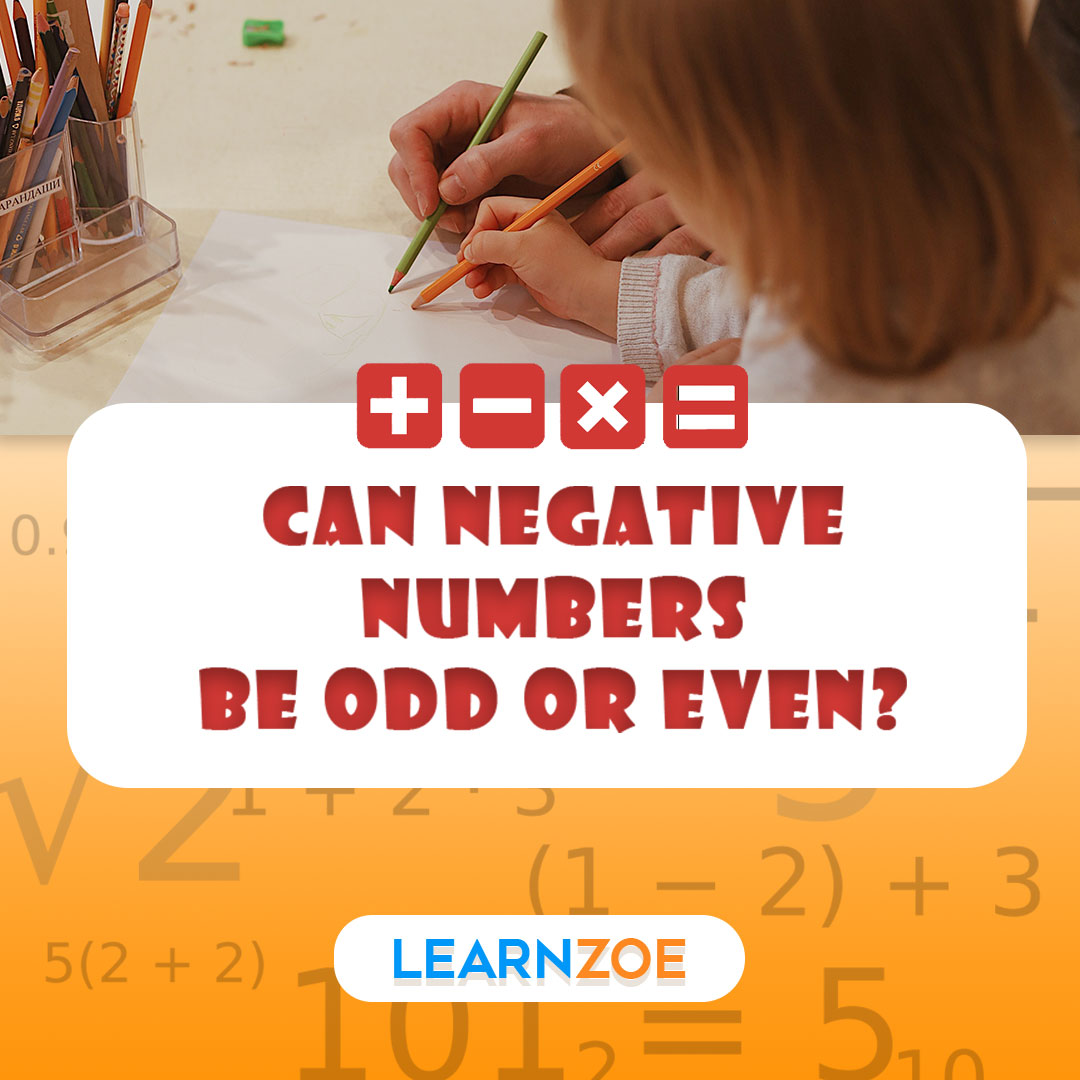Can Negative Numbers Be Odd Or Even?

Negative Numbers
Negative numbers are a fascinating aspect of mathematics that often raises questions and sparks curiosity. A common question is whether negative numbers can be classified as odd or even. In this comprehensive article, we will delve into the world of negative numbers and explore the concept of their parity. From understanding the fundamental principles of odd and even numbers to analyzing the characteristics of negative numbers, we will uncover the truth behind this intriguing question. So, let’s embark on this mathematical journey and discover the answer: Can Negative Numbers Be Odd Or Even?
The Basics: Odd and Even Numbers
Before we delve into the specifics of negative numbers, let’s revisit the basics of odd and even numbers. In the realm of integers, we can classify numbers as either odd or even. An odd number leaves a remainder of 1 when divided by 2, indicating it is not divisible evenly by 2. On the other hand, an even number is divisible evenly by 2, with no remainder.
For example, let’s take the numbers 3 and 4. The number 3 is odd because it can’t be divided evenly by 2. On the other hand, the number 4 is even since it can be divided evenly by 2, resulting in a quotient of 2. This basic principle is the foundation for classifying numbers as odd or even.
Exploring Negative Numbers
Now that we have refreshed our understanding of odd and even numbers let’s shift our focus to negative numbers. Negative numbers are numerical quantities less than zero, marked by a minus sign (-) before the number. They extend the number line to the left of zero and hold their unique properties.
Negative numbers can also be classified as odd or even based on their divisibility by 2. The divisibility rules for negative numbers are similar to those for positive numbers. If a negative number can be divided evenly by 2, it is classified as an even number; otherwise, it is categorized as an odd number.
Can Negative Numbers Be Odd?
Negative numbers can indeed be odd. To understand this, let’s consider an example. Take the negative number -5. When divided by 2, it yields a quotient of -2 with a remainder of -1. Although the quotient and remainder are negative, we can see that the remainder is 1 less than the divisor, which makes -5 an odd number.
Similarly, if we examine the negative number -9, it can also be classified as odd. Dividing -9 by 2 gives us a quotient of -4 with a remainder of -1. Again, the remainder is 1 less than the divisor, indicating that -9 is an odd number.
Can Negative Numbers Be Even?
Negative numbers can also be even. Let’s illustrate this with an example. Consider the negative number -6. When divided by 2, it yields a quotient of -3 with no remainder. Since -6 is divisible evenly by 2, it falls into the category of even numbers.
Likewise, if we examine the negative number -10, it can be classified as even. Dividing -10 by 2 gives us a quotient of -5 with no remainder, confirming that -10 is an even number.
Characteristics of Negative Numbers
Negative numbers possess unique characteristics that set them apart from positive numbers. Here are a few noteworthy points about negative numbers:
- Negative numbers are always less than zero.
- The product of two negative numbers is always positive.
- When negative numbers are added or subtracted, the result can be positive, negative, or zero, depending on the magnitudes of the numbers involved.
- The absolute value of a negative number is its positive counterpart. For example, the absolute value of -7 is 7.
FAQs about Negative Numbers
Can negative numbers be prime?
No, negative numbers cannot be prime. By definition, prime numbers are positive integers greater than 1 divisible only by 1 and themselves. Since negative numbers are less than zero, they do not fit the criteria for being prime.
Can negative numbers be fractions?
Yes, negative numbers can be fractions. Fractions consist of a numerator and a denominator, which can be positive or negative. For example, -1/2, -3/4, and -5/6 are all negative fractions.
Can negative numbers be decimals?
Yes, negative numbers can be decimals. Decimals represent fractions or parts of a whole. They can be positive or negative, depending on whether they are greater or less than zero. Examples of negative decimals include -0.5, -1.75, and -3.14.
Can negative numbers be natural numbers?
No, negative numbers cannot be natural numbers. Natural numbers are whole numbers greater than zero, excluding decimals, fractions, and negative numbers. The set of natural numbers includes 1, 2, 3, 4, and so on.
Can negative numbers be irrational?
Yes, negative numbers can be irrational. Irrational numbers are real numbers that cannot be written as fractions and do not end or repeat. Examples of negative irrational numbers include -√2 and -π.
Can negative numbers be integers?
Yes, negative numbers are integers. Integers are whole numbers, including zero and their negative counterparts. They are represented by the set {…, -3, -2, -1, 0, 1, 2, 3}.
Conclusion
Negative numbers can be classified as odd or even, just like positive numbers. Both types of numbers follow the same divisibility rules to determine their parity. Suppose a negative number can be divided evenly by 2. In that case, it is classified as even, while a remainder of 1 less than the divisor indicates that it is odd. Understanding the characteristics and properties of negative numbers allows us to explore the intricacies of the number system and appreciate the beauty of mathematics.
Next time you encounter a negative number, remember that it, too, can possess the qualities of oddness or evenness. Mathematics holds countless mysteries, and negative numbers are just one aspect that adds to its allure.
